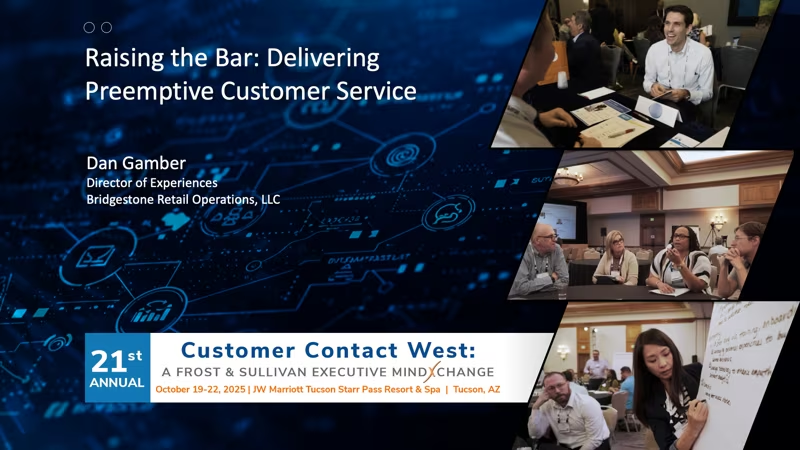Years ago, I started conversations with one of our product design teams. I asked about how they could make their product better by solving issues our customer experience (CX) group found. In response, I was asked to justify why they should build features to help CX instead of building a new feature that would generate revenue.
I made a common mistake. I shared traditional contact center metrics like cost per contact, average handle time, resolution, and abandonment. These metrics got blank stares. After one presentation, an executive asked, “Well, what’s the problem?” I told him the high volume of contacts were driving unnecessary costs we didn’t have in our budget. He took a moment, then looked down at his watch for 10 seconds before responding. “I just made that much money. Are we good now?”
An All Too Familiar Story
CX groups know what it’s like to get blank stares and skepticism when they pitch the importance of their metrics to product teams. What’s in it for them? From the executive’s perspective, so what if 1% of players aren’t being helped if 99% of players are bringing in millions in revenue?
The issue was that we weren’t telling the right story. The story wasn’t that issues with products drove contacts that cost money, but that not having a frictionless way to help these customers left money on the table for product teams. Solving this for them and for our organization meant telling the story in a way that clarified the impact to their bottom line.
We started asking questions to understand which metrics mattered to product teams. Then we did research to align our CX metrics. In our company’s case, resolution correlated to engagement through session days (how many days players log in to play their games). And session days correlate with revenue. When they understood this, not involving CX with product design turned the executive’s question into, “How much money am I leaving on the table?”
A Partner Engagement Role Bridges the Gap
We keep CX top of mind by pairing a Partner Engagement Director role with product development teams. Our Partners share strategies and technology roadmaps, meet with senior management, and make sure our CX group always knows what’s going on with each product.
It’s common for departments like Finance or HR to have business partners embedded in product leadership teams. It happens less for CX, but if you want to influence product design, you have to have a role that does just that.
In the past, our group would have to react to missed CX opportunities because we weren’t involved in product creation until right before launch. Now, we’re able to spot issues the moment a game is being designed. We’re able to alter our roadmaps based on product team needs, and submit our own feature requests alongside new game features. This all happens because we finally have a seat at the table.
So, What Should You Do When You Get That Seat?
Once you get a seat at the table, introduce CX best practices like design thinking and journey mapping. Before you know it, you won’t be the support team that tells the company how everything is going to break. You’ll be a customer-focused consultant who helps simplify and improve experiences.
For us, the tone of our meetings started to shift. Instead of presenting top contact drivers and metrics, we hosted a journey mapping session about a major account registration challenge. The product team liked the process so much that we were invited to do it again, the second time focusing on a decision they needed to make about game design.
If you want your product to succeed, you’ll need to remember these three steps.
- Correlate your metrics to the ones for the product you’re trying to influence.
- Invest in a Partner role to keep your seat at the table.
- Show the value of CX best practices through real-world applications.
Do All of the Above, Because CX Drives Loyalty
We proved that resolution reigns supreme. We looked at players who contacted us and followed their patterns. Players whose problems get resolved are more likely to stick with us than players who never had any, because loyalty is built by being there when people need you.
With the studies and data to prove this, we were able to tell this story and quantify the opportunity with product teams. It made the value of CX clear. It ended all 10-second pauses and skeptical questions.
Eventually, we started to get a different question: “Should we be driving contacts?” The answer is of course, no. You don’t want to break everything just so people call and you can create loyalty. But you do need to make sure that customer experience is at the forefront of all product design.
Josh Reynolds is a customer experience leader with twelve years of experience designing and delivering differentiated customer and employee experiences. At EA, he oversees the strategy for integrating customer experience technology and process into the larger EA company platform, as well as leads the team responsible for all CX technology including CRM, channels, web and self-service tools. Prior to EA, he spent several years as the product owner for AppleCare’s proprietary CRM system.



